AUTOMATIC KAFKA ISSUE NUMBER FOUR
Good grief! It's a superhero comicbook!
I’ve been thinking about writing about this for a while now. I just wasn’t sure how to attack it. To be honest, I’m still not sure what I’m going to say. Let’s see how it goes…
In 2003/2004, nine issues of a series called AUTOMATIC KAFKA were published by the long lost Wildstorm imprint at DC Comics (who had purchased said imprint a few years earlier as part of a deal that was made primarily to lock in 90’s mega-hot artist, Jim Lee, forever wedding him to the oldest comicbook publisher of them all). I created the book with artist, Ashley Wood and it was, by far, the weirdest superhero comicbook that either Marvel or DC was putting out into the world at that moment in time. That’s right, I said it. Prove me wrong. I dare you.
Back then, when it came to series that I created, there was always one issue -- often fairly early in the run -- where I would break from my own established format and take a big, creative swing. It came from two specific inspirations: Alan Moore and Grant Morrison. Y’see, there were two issues of Moore’s Saga of the Swamp Thing: issue #32, “Pog” and issue #34, “Rite of Spring”. Both were single issue stories that stood apart within a run that was already groundbreaking, either in their content or their experimentation. In Grant’s case, it was Animal Man #5, the famous issue titled “The Coyote Gospel”. Some would say that was the comicbook where, in America, Grant Morrison became Grant Morrison. I’m not going waste time synopsizing those stories for you here. If you know… then you know.
Where Moore tipped his hat to Walt Kelly and Morrison to Chuck Jones, I decided to tackle perhaps the most venerable Twentieth Century cartoonist of them all, Charles Schulz, who had just passed away just a few years earlier. And, for the most part, his life’s work, Peanuts, died with him (at least in its pure, comic strip form).
It wasn’t the most original trope -- what are fictional child characters like when they’re all grown up? -- and I’m sure it had been done before in other media, but I had no evidence that it’d been done in mainstream comicbooks before. I’d grown up reading Peanuts. And not just in the newspaper, but in large trade paperback collections of the strip from the late 1970’s/early 1980’s. And I was young and full of piss and vinegar so I went for it. Thus was born AUTOMATIC KAFKA issue #4.
The series itself followed the misadventures of the titular character, a retired superhero who was trying to find new meaning in his life. In fact, he was experiencing a kind of mid-life crisis. At this point in the series, as a former member of a famous superhero team known as the $tranger$, Automatic Kafka had been headhunted by a government agency to work for them and his response was a “hide in plain sight” tactic of becoming, of all things, a game show host on a popular TV show called “The Million Dollar Detail”.
Where I was simultaneously reflecting the superhero concept through a decidedly corporate lens in my other Wildstorm series, WILDCATS VERSION 3.0, this series was all about the superhero concept reflecting pop culture itself, albeit in very superficial ways. At that point, still relatively early in my career, AUTOMATIC KAFKA was my most experimental work, which is why Ashley Wood seemed to be the perfect artist to visually bring the series to life.
So, by this fourth issue, I took a bit of a left turn and employed what I felt was a sacred cow -- meaning, the Peanuts strip -- as a means to ask some deeper questions than what the series had attempted to address up to that point.I even titled the story “Lil’ Folks” (the original title of the Peanuts strip). But, as the story progressed, I felt it was pretty obvious what we were doing.
This issue focused on one of the hapless contestants that appeared on The Million Dollar Detail, a middle-aged schlub named “Charles Brown”. When his appearance on the show ends, we follow him home and discover the very familiar world he still lived in.
So, here’s some brief excerpts from the script for that issue, written way back in early 2003, along with the finished pages for comparison…
PAGE FIVE
Panel 1. Tier-wide shot across the top of the page. Wide angle of Lucille’s office. Very warm, tastefully decorated. Lucille sits in a leather chair, a footstool nearby (unused). Charles is laying down on a couch, staring up at the ceiling. Lucille is sitting next to the couch, at Charles’ head (so he can’t see her). Warm sunlight filtering in through the window.
1 LUCILLE: That’s very ODD, Charles.
2 LUCILLE (2): And you don’t equate it with the show at all…?
3 CHARLES: I don’t see HOW…
So Lucy grew up to be a psychiatrist after all. I’m sure she was charging Charles more than a nickel, though.
PAGE NINE
Panel 5. We cut to a rubber room located deep within the institution. Padded walls. Your basic psychotic nightmare. Down angle, looking into one corner of the room. Linus is crouched in the corner, wearing a straightjacket, looking dead to the world. His eyes are a haunted stare, looking right at us. His blanket, worn and torn and frayed, hanging out of his mouth (without the use of his hands, all he can do is chew on it). His hair is wispy, falling out of his head (to give him more of the cartoon look). On the floor around him are pieces of a smashed pumpkin, and pumpkin seeds strewn about, as well (might as well go for all the necessary imagery, right…?).
11 CAP: “… he’s living in his own little WORLD right now.”
So, despite the fact that Charles’ sister, Sally, did end up marrying Linus Van Pelt after all… the Great Pumpkin still drove a wedge between them.
PAGE FOURTEEN
Panel 3. Angle on another part of the party. Franklin is talking to several other party-goers, just mingling (two of them are a grown-up Peppermint Patty and Marcie, linked arm-in-arm like the lesbian lovers they are). Franklin smiles at them, ever the charmer.
3 PATTY: Without our memories, what else IS there?
4 MARCIE: Well put, sir.
5 FRANKLIN: I HAD a few good memories…
6 FRANKLIN (2): … but I forgot what they were.
As the script excerpt states, this was where we subtly confirmed Patty and Marcie’s lesbian relationship.
PAGE TWENTY
Panel 3. Reverse angle, looking down from Charles’ POV. A small, yellow canary… looking really fucked up. Dead as disco. Some blood splattered on the ground around it. Broken wing. Smashed beak. Pathetic. Pieces of glittering, shattered glass all around it.
NO COPY
Panel 4. Cut to back inside. Charles entering the living room, through the sliding glass door. He’s holding the dead bird in both hands, very gently.
NO COPY
Panel 5. Charles sits on the couch, still holding the bird in his hands. In the background, out of focus, we see the stuffed dog in the corner of the room, a single shaft of moonlight falling across it (but still keep it out of focus for now).
NO COPY
Panel 6. Reverse angle (as though the camera were in the corner where the stuffed dog is sitting). Looking at Charles, still with the bird in his hands, but looking up and at us with a completely depressed gaze (he’s looking at the dog).
NO COPY
Of course, that’s Woodstock that flew into the sliding glass door.
PAGE TWENTY-ONE
Panel 1. Tier-wide panel, stretching across the entire top of the page. Perfectly cinema-framed shot of the stuffed beagle, calmly sitting in the corner of the room. White hair, black ears, black spot on its back. You know who I’m talking about. A beam of moonlight falling across it. This thing has to look f**kin’ photo-realistic as hell. It should look like the goddamn Holy Grail or the Mona Lisa. This dog is the key to the universe.
NO COPY
And there you have it. Snoopy, post-taxidermy. A twisted reminder of long-lost youth that ol’ Charles Brown has kept in his living room for God knows how long. His “Rosebud”. You gotta love it…
So, as you can see… it was a pretty grim affair, all around.
Without Schulz around to diligently watch over them, the Peanuts characters were in danger of assholes like me getting a hold of them and taking them far afield of their original intentions. And, in doing so, perverting them into something they were never meant to be. In this case… adults.
Ultimately, I wanted to say something that was pretty much in direct opposition to how just about all of corporate comicbooks operate… that being, with the rare exception, a character’s creator (or co-creators) will always be the one most ably suited to shepherd that character throughout its publishing journey, that the purest character creations were understood best -- and depicted most effectively -- by those who created them.
Now, I realize that might sound a bit hypocritical, considering that I’ve made a good living taking the reins of characters whose creators have long since passed. And for other characters I’ve written, their creators might still be among the living, but simply don’t own/control their creations. What can I say? I contain multitudes. Not to mention, since then I’ve found myself on both sides of that particular equation (but that’s a topic for another newsletter).
In any case, if the concept was something I simply alluded to in issue #4, when the final issue, #9, rolled around, I came right out and stated the idea outright. I even brought back good ol’ “Charles Brown” to drive the point home (not to mention, Ash and I appearing as ourselves within the story)…
It’s really weird to revisit this work, twenty-four years later, but it’s also interesting to see where I was actually a little bit prescient in my ideas and my views on the nature of creativity (and of original creations, in general). But I gotta say… for the most part, it holds up pretty well.
God knows why DC hasn’t yet collected AUTOMATIC KAFKA as a trade paperback aimed at the bookstore market. But, y’know, never say never…
Joe Casey
USA


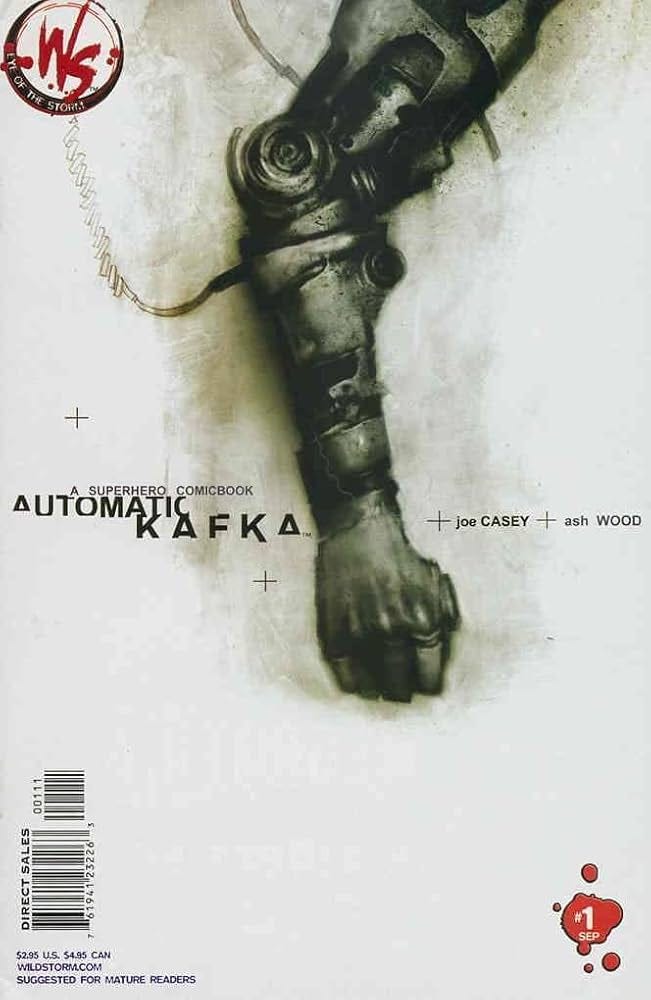
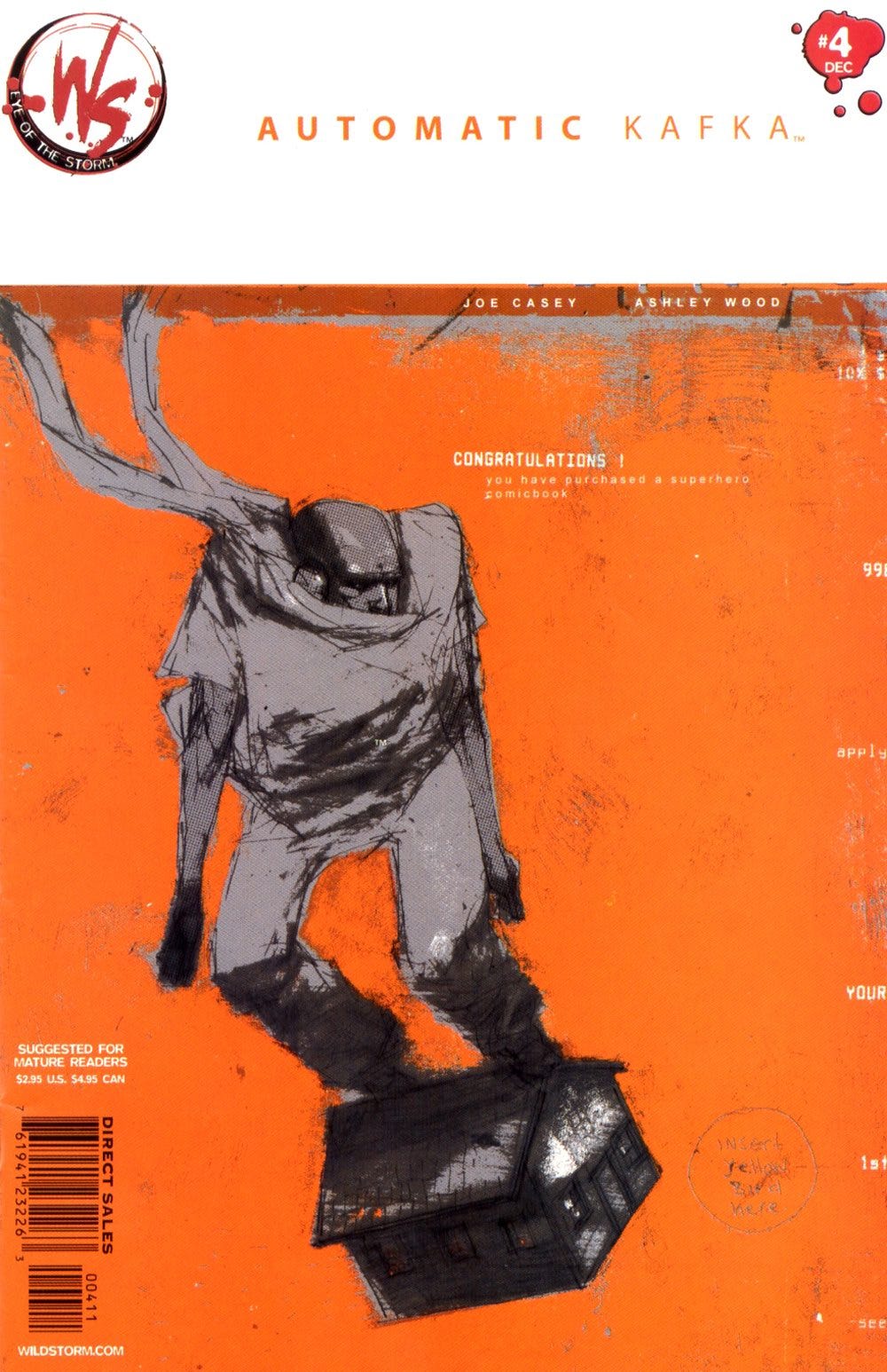
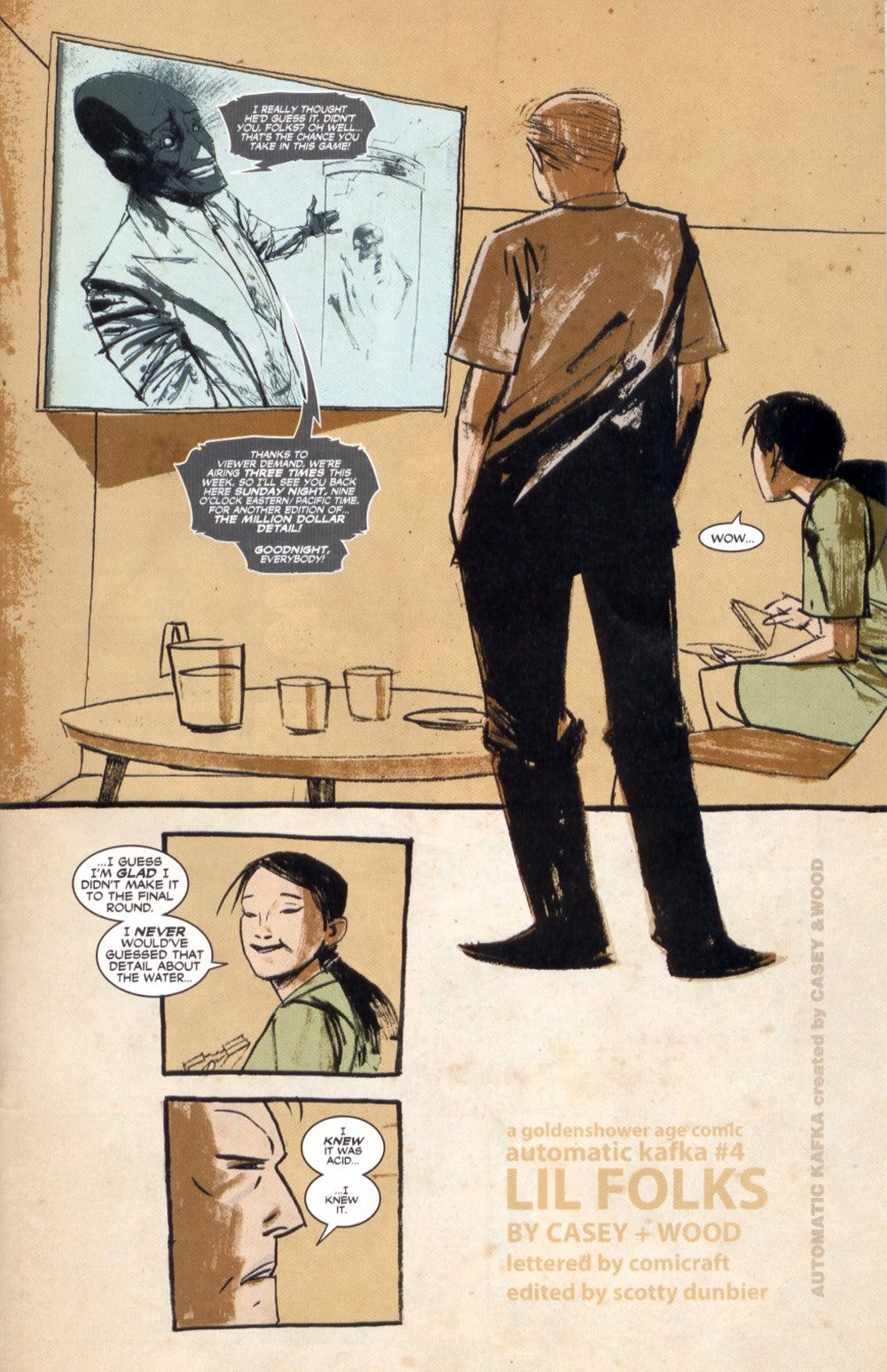
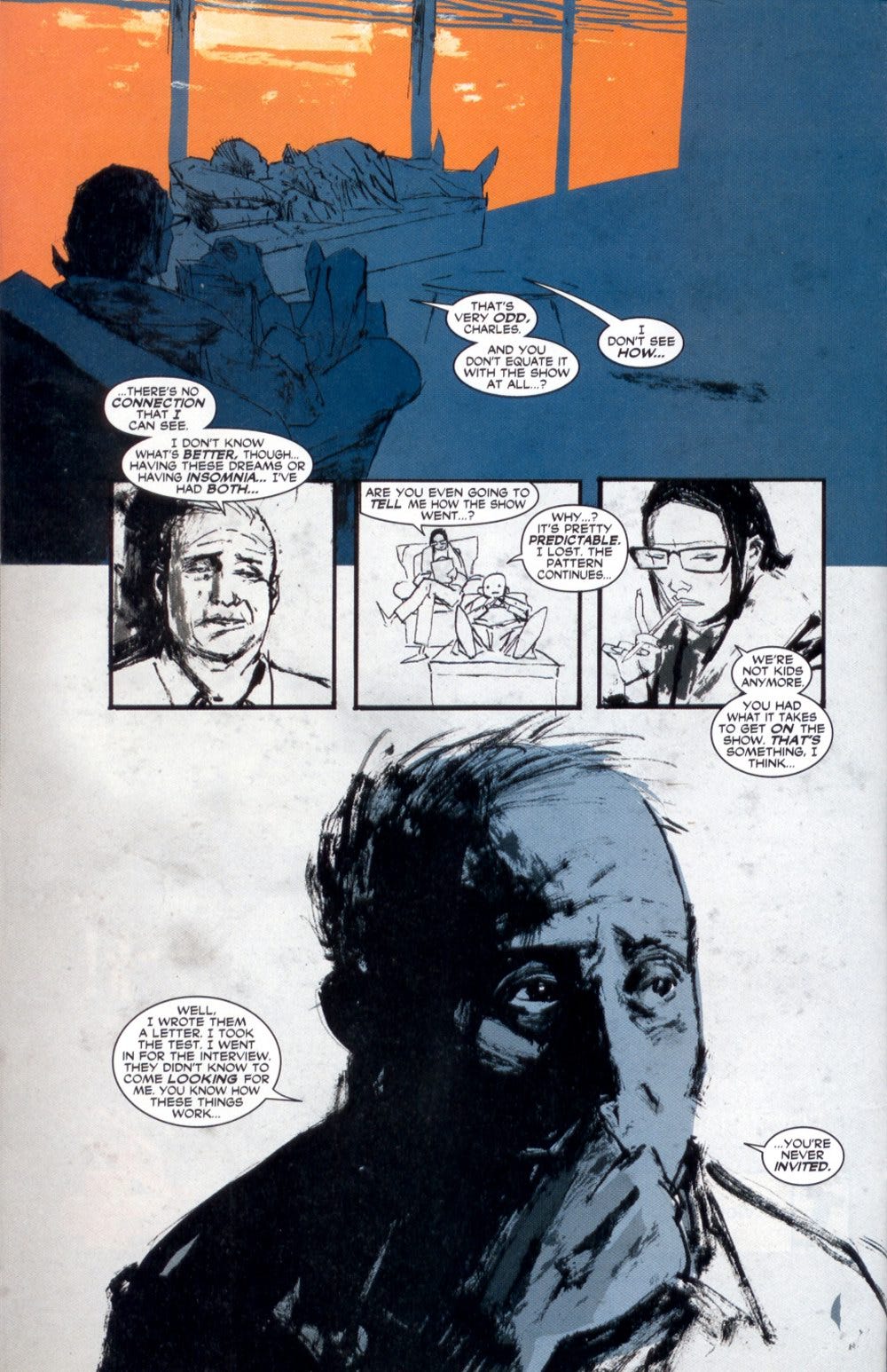
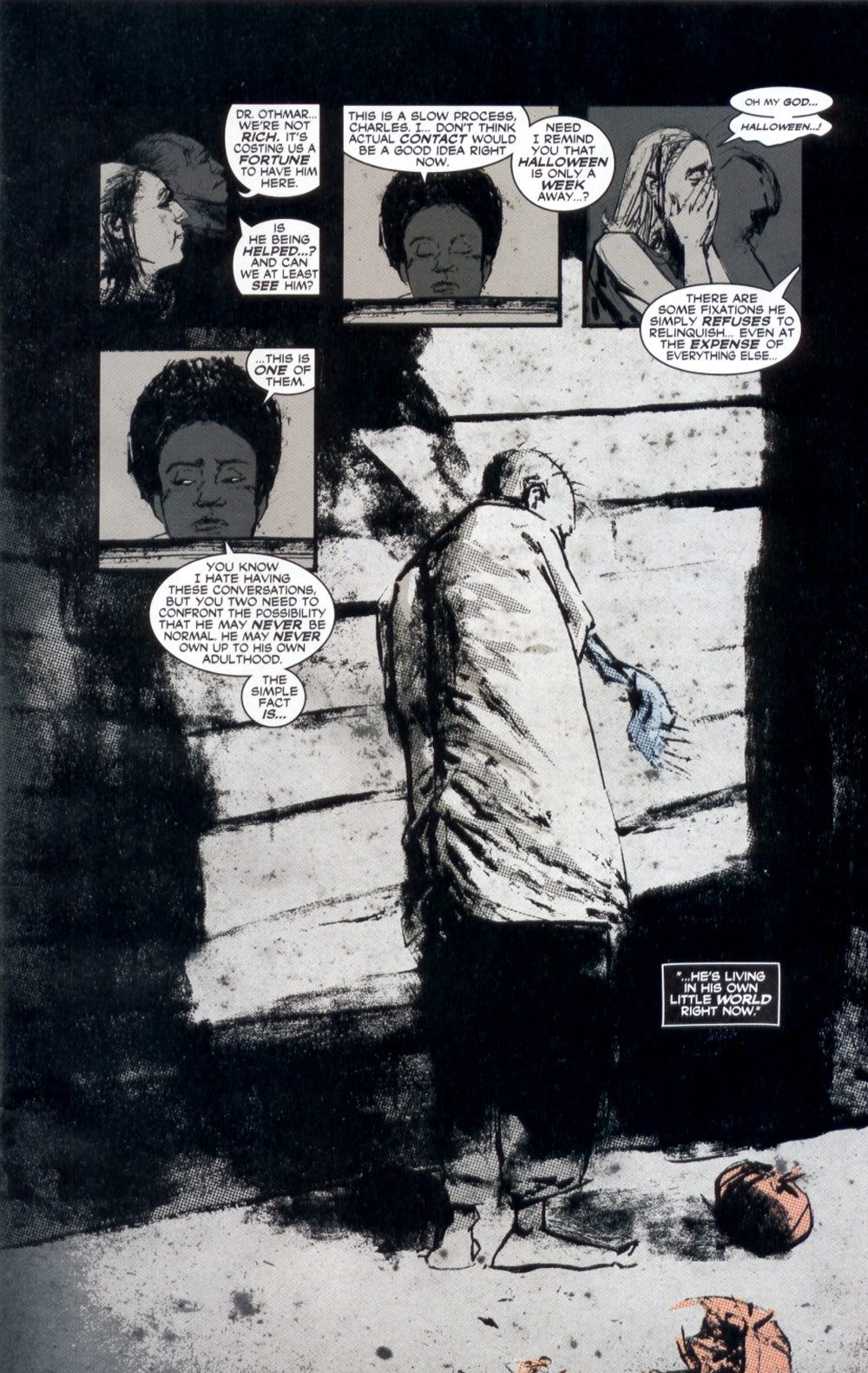
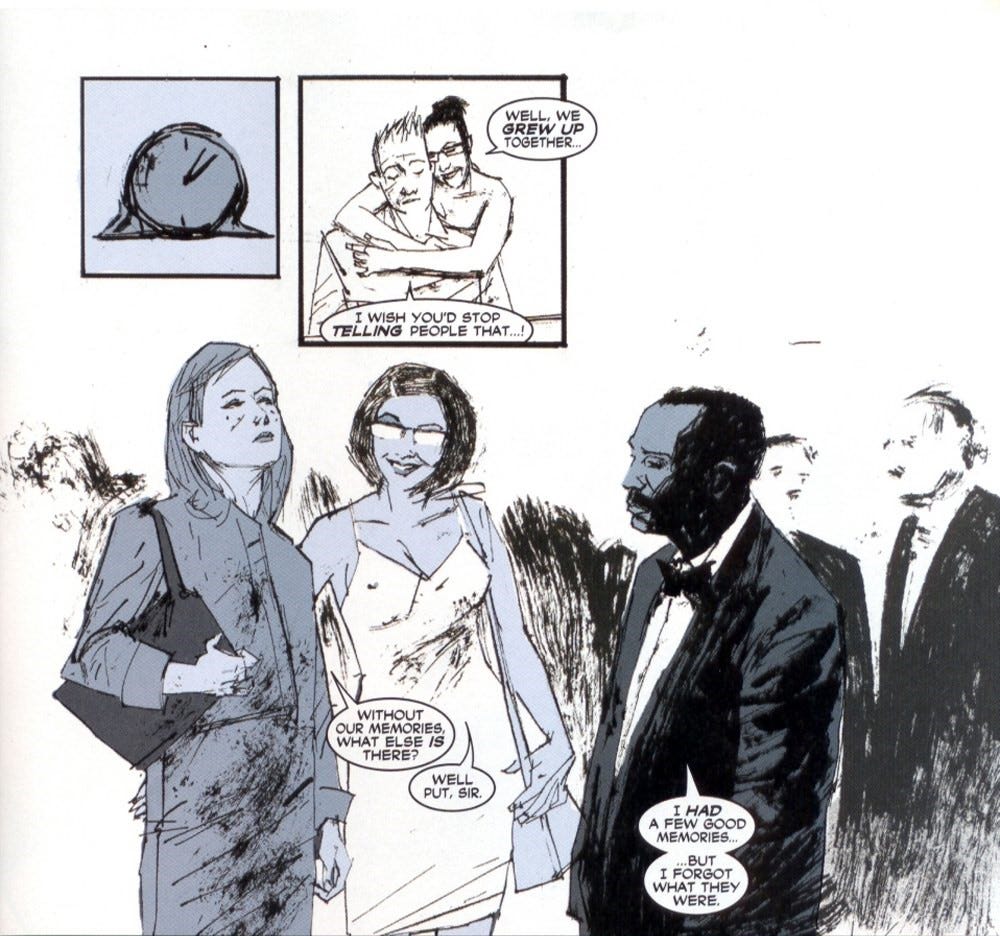
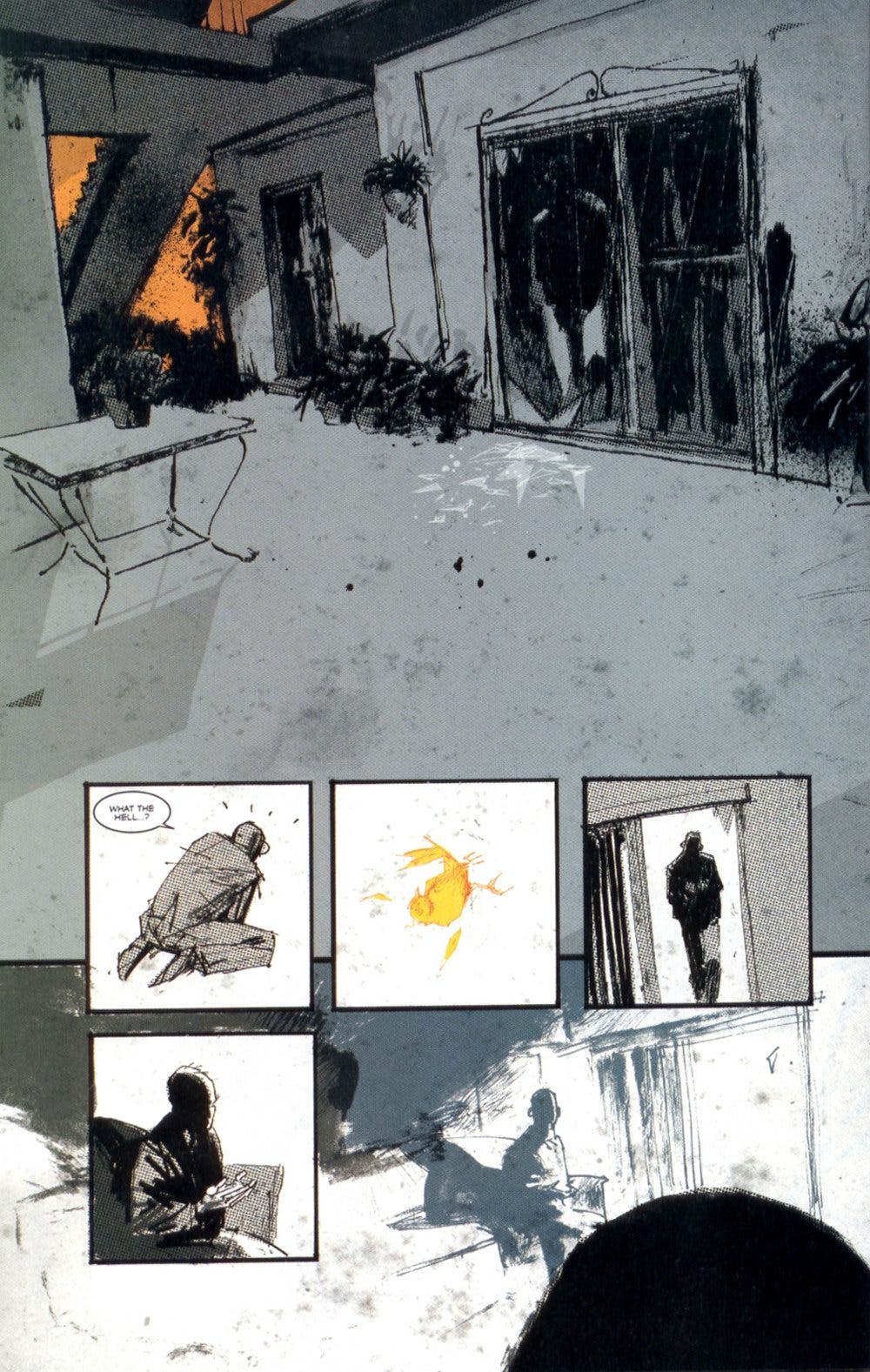
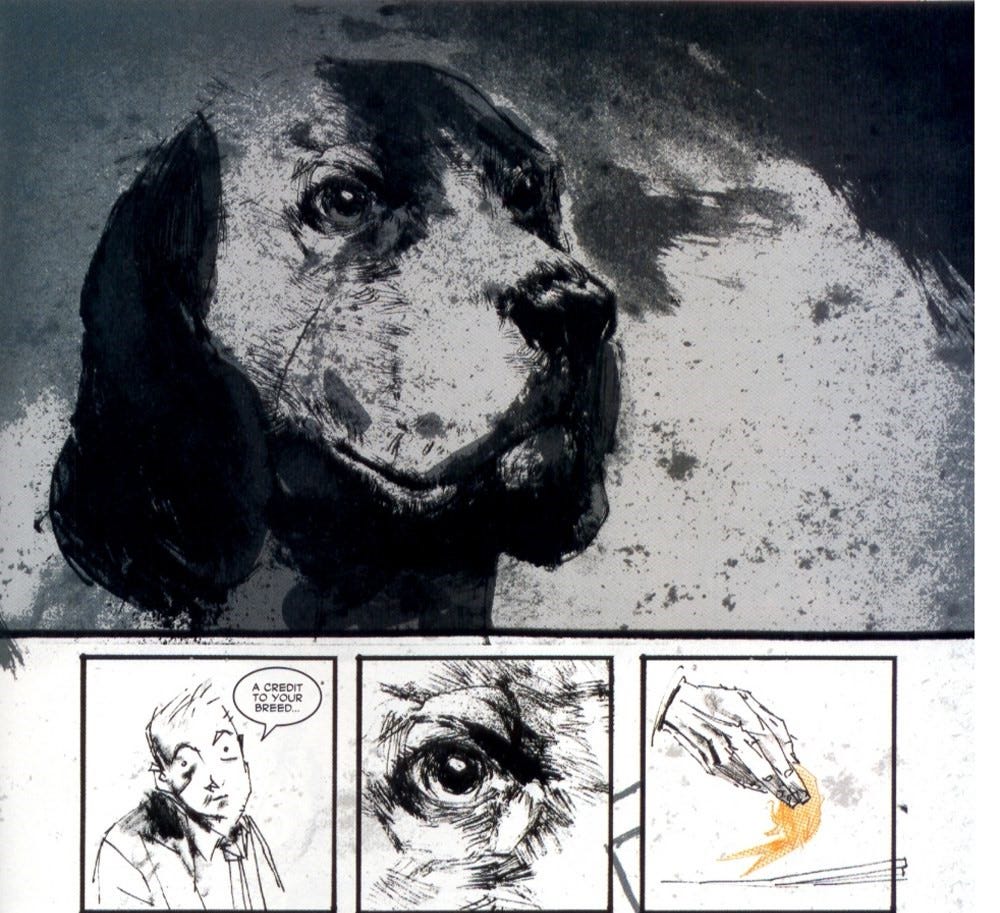
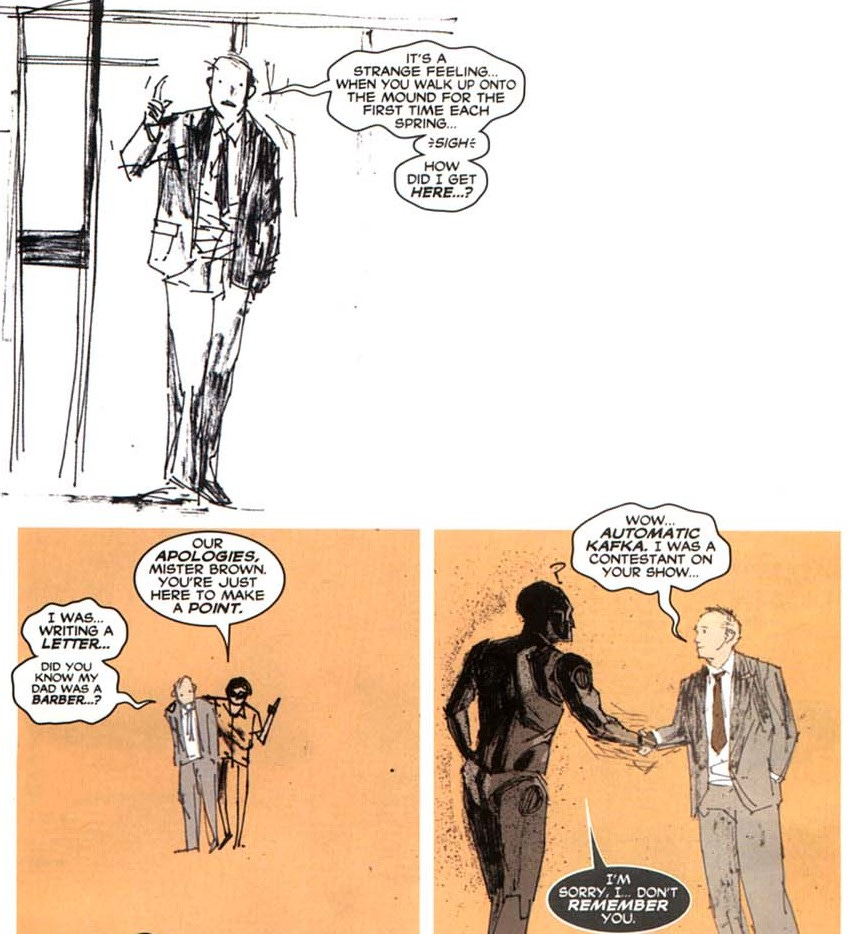
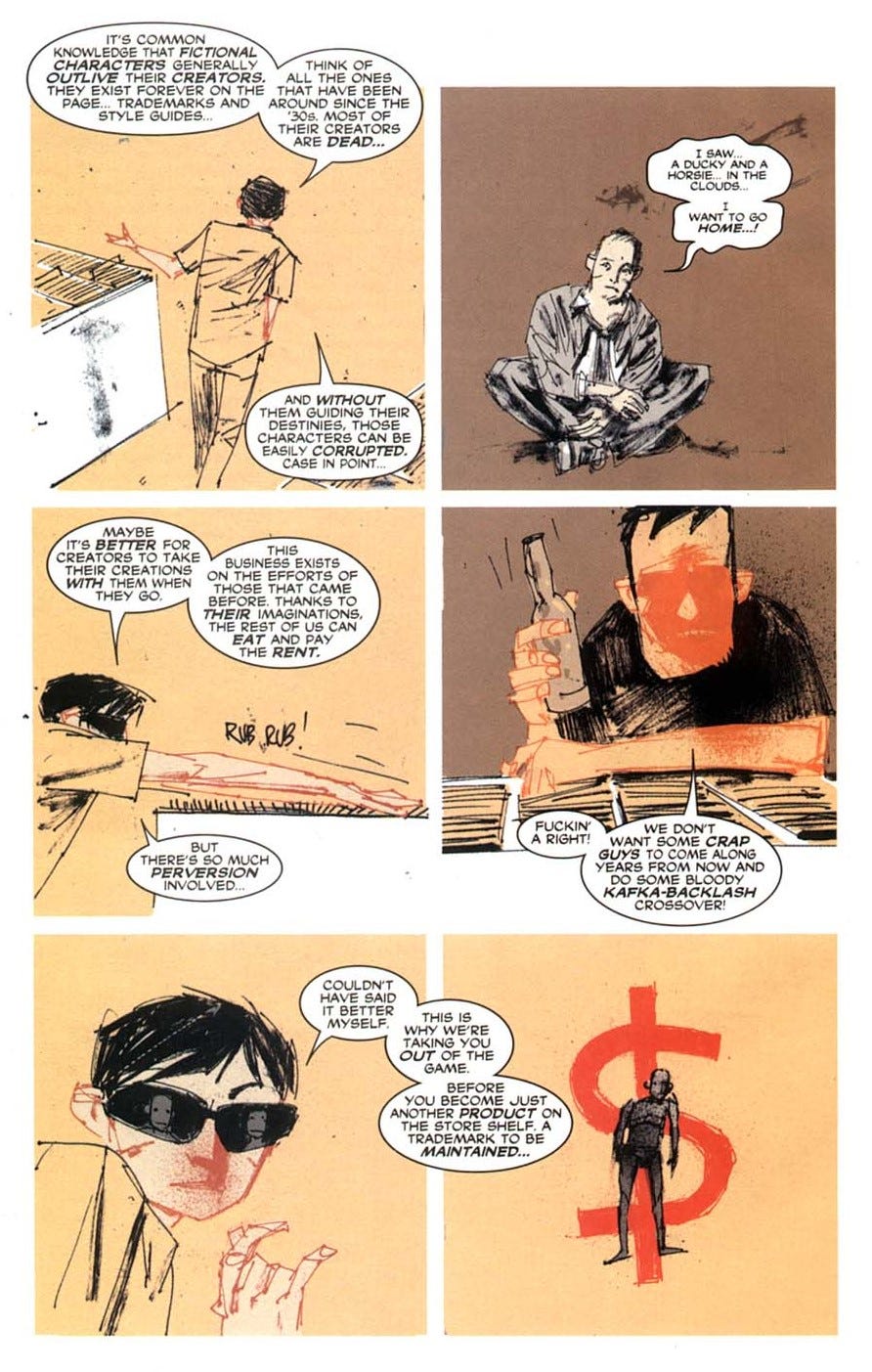
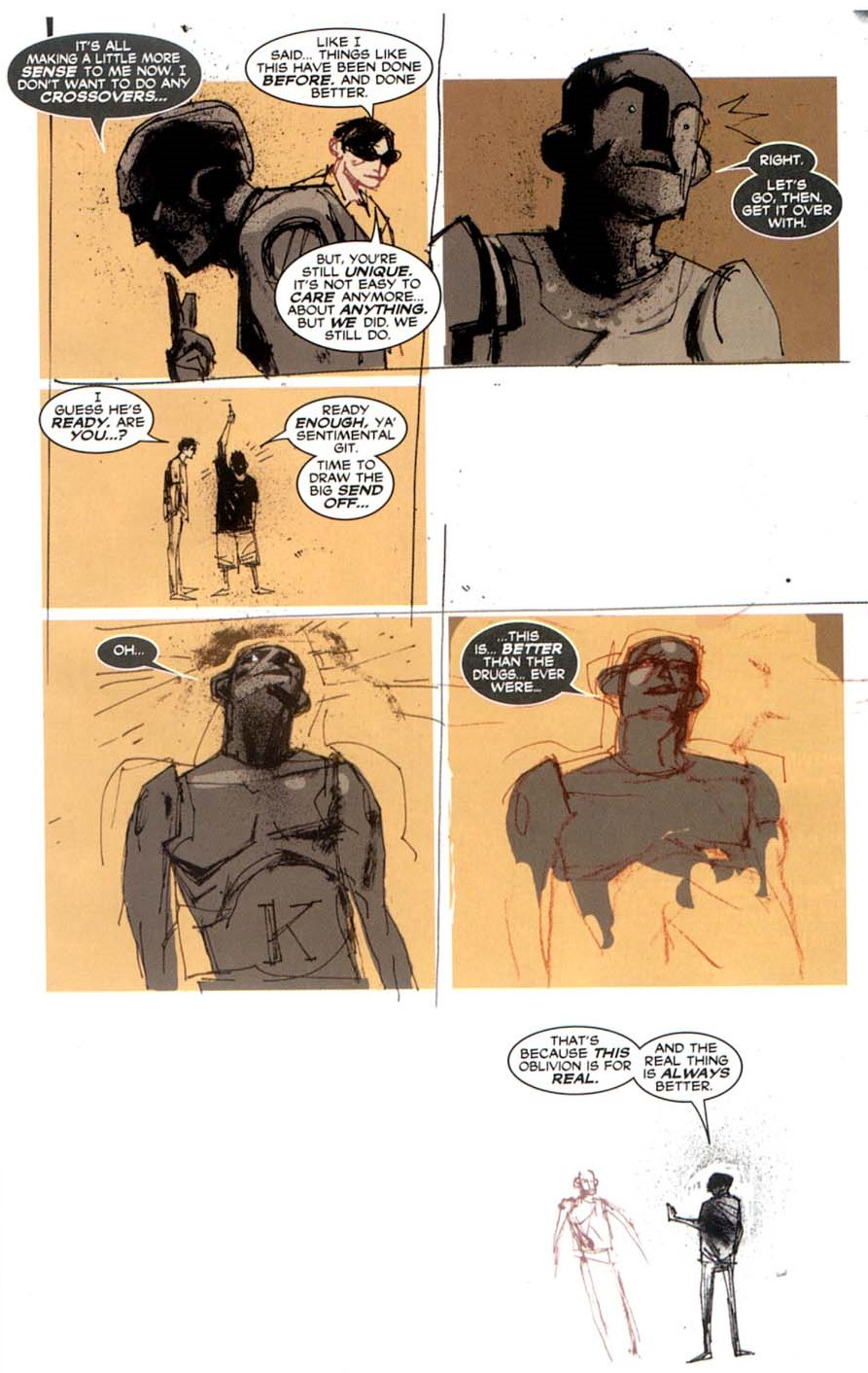

Joe Loved AK so so much.
Utterly criminal it’s never been collected.
Still remember posting about this issue on the WEF way back when.
Hello Mr. Casey, hope you're having a great day. Automatic Kafka is a series of yours that I have been trying to find the singles of, but I have sadly failed every time and it doesn't really help the fact that the series has neither been reprinted by DC nor is it available on Comixology for whatever reason.
But it made me wonder: if DC doesn't seem to have any plans to reprint the series in either physical or digital after so many years — why not try negotiate to obtain the rights to the series back from them and do it yourself? I mean, there are comics like Major Bummer and Whistling Skull who were previously published by DC but later had their rights obtained by their respective creative teams and republished elsewhere (with the caveat that you have to alter the comic to remove whatever DC-related things in there, in this case all references to the Wildstorm universe). I think you and Ashley should go for it, doesn't hurt to try.